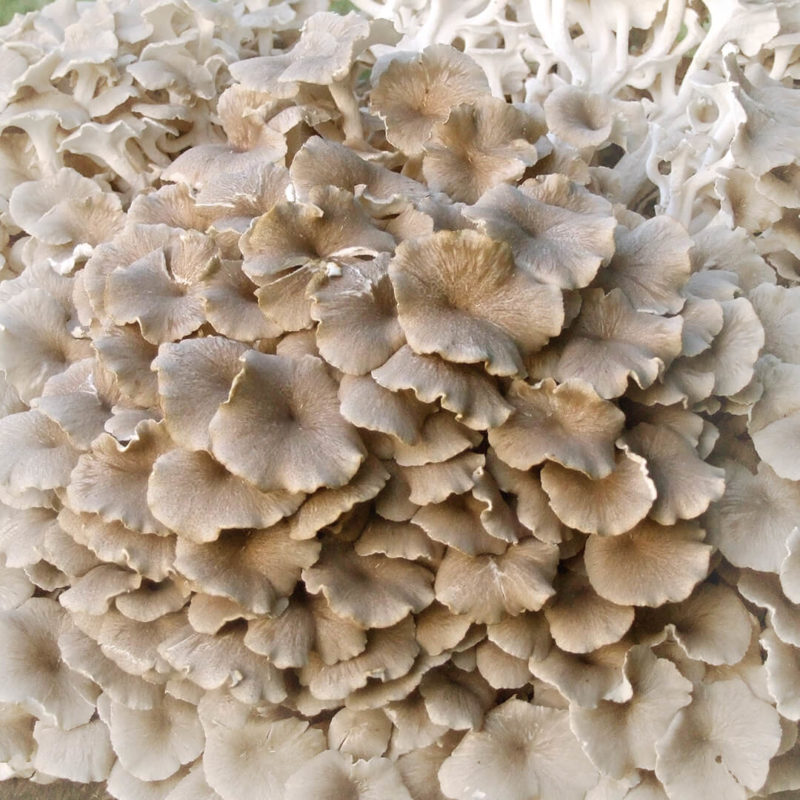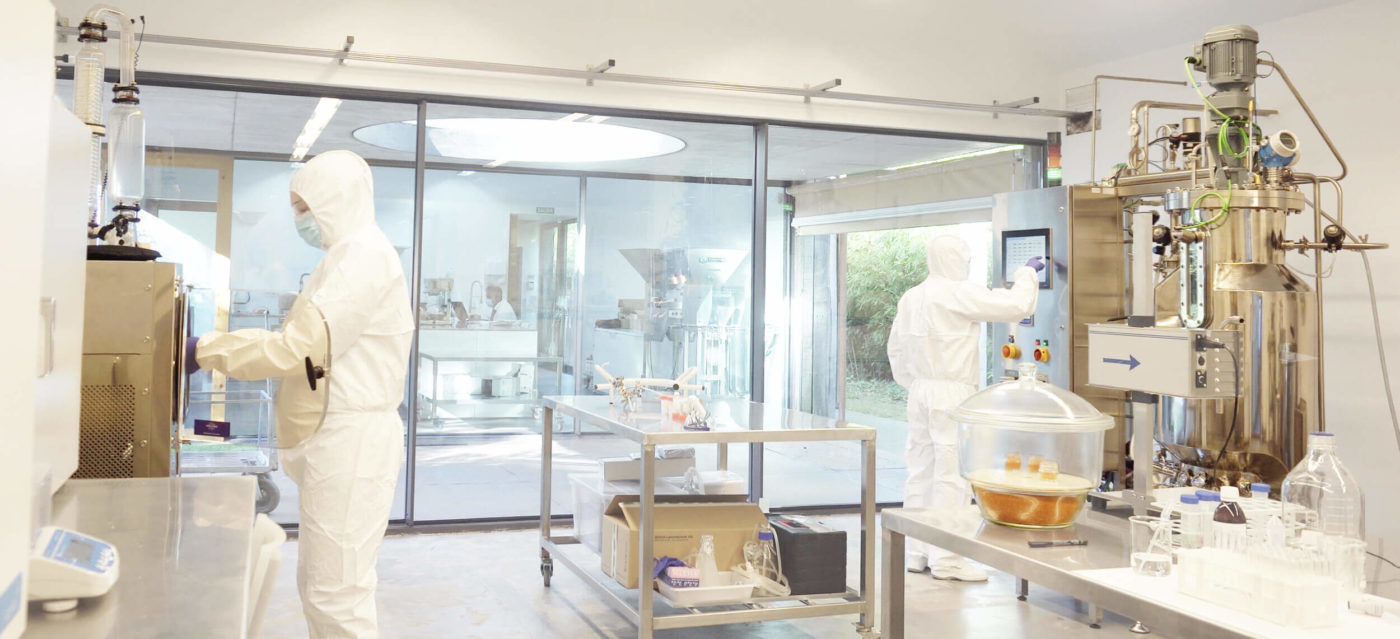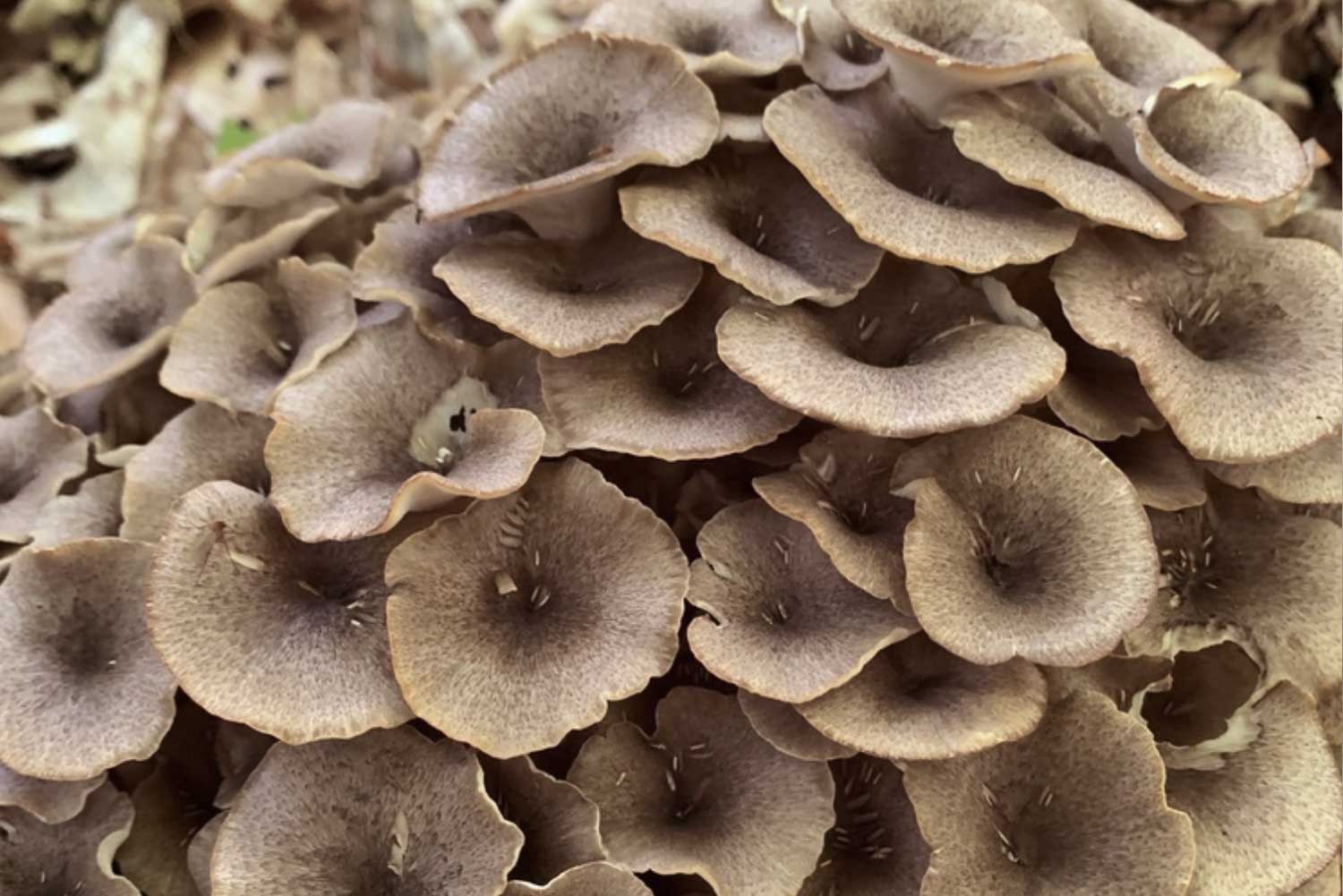Il Polyporus, Polyporus umbellatus, è considerato un importante fungo medicinale per la presenza di metaboliti bioattivi con proprietà interessanti per la salute umana. Il suo studio deriva dalle applicazioni della medicina orientale, dove è stato a lungo utilizzato per il drenaggio.
Sebbene possa avere un aspetto simile, è differente dal Maitake, che è un altro fungo con cui condivide aspetto, genere e alcune applicazioni.
Il P. umbellatus non è popolare come il Chaga, come quest’ultimo, non viene molto usato in cucina, il suo utilizzo è limitato al settore scientifico. Tra i nomi più comuni di questa specie ci sono: “Zhu Ling”, “Tsuchi-maitake”, “Maitake chorei” e “Grifola umbellata”.
APPUNTI ESSENZIALI SUL POLYPORUS
Aree di studio sulla salute di P.umbellatus
La composizione chimica del Polyporus contiene sostanze interessanti, importanti per il normale sviluppo di alcune funzioni biologiche. Per questo motivo è oggetto di nuove ricerche, in particolare nelle seguenti aree di studio:- Immunologia: studi sull’azione sulle cellule immunitarie e l’impatto sulle difese (sistema immunitario).
- Sistema endocrino-metabolico: funzione detox
- Sistema genito-urinario
- Sistema respiratorio
- Supporto integrativo

PROPRIETÀ, APPLICAZIONI E USI DEL POLYPORUS
En la actualidad sabemos que el extracto es una de las formas preferidas para el aprovechamiento de los nutrientes de interés que contiene el Polyporus. Este garantiza la alta concentración de beta-glucanos, terpenos y biomoléculas como ergone, entre otros, y también su actividad en el organismo.
Biomoléculas activas de Polyporus
L’estratto è una delle formulazioni più efficaci per utilizzare i nutrienti contenuti nel Polyporus, poiché garantisce un’elevata concentrazione di β-glucani, terpeni e biomolecole come l’ergone, nonché la loro attività nell’organismo.
L’estratto di Polyporus si trova in Mico-Polypor, un integratore alimentare in capsule a base di estratto organico puro e standardizzato di Polyporus umbellatus.
PROPRIETÀ, APPLICAZIONI E USI DEL POLYPORUS
En la actualidad sabemos que el extracto es una de las formas preferidas para el aprovechamiento de los nutrientes de interés que contiene el Polyporus. Este garantiza la alta concentración de beta-glucanos, terpenos y biomoléculas como ergone, entre otros, y también su actividad en el organismo.
Biomoléculas activas de Polyporus
L’estratto è una delle formulazioni più efficaci per utilizzare i nutrienti contenuti nel Polyporus, poiché garantisce un’elevata concentrazione di β-glucani, terpeni e biomolecole come l’ergone, nonché la loro attività nell’organismo.
L’estratto di Polyporus si trova in Mico-Polypor, un integratore alimentare in capsule a base di estratto organico puro e standardizzato di Polyporus umbellatus.
PRODOTTI A BASE DI POLYPORUS
NUTRIENTI PRINCIPALI
Questa specie possiede nutrienti di interesse funzionale per il mantenimento dell’omeostasi tra i quali:
Beta-glucanI
ENZIMA SOD
VITAMINE:
ErgosterolO
MINERALI:
Calcio
ergone
TERPENI:
Poliporusterone B
HABITAT AND DISTRIBUTION
Polyporus is a species that can be found in a mix of forests in all latitudes, being found less frequently in Europe. Central America and East Asia are the areas where most specimens have been found growing wild.
MYCOLOGICAL NOTES
P. umbellatus belongs to the order Poriales, family Poriaceae and genus Grifola, which it shares with Maitake (Grifola frondosa).
This species is saprophytic, decomposes wood for food and, as it matures, its own flesh turns from white and soft to hard and woody in consistency. It can be found growing wild in the forest, reaching up to 20 kg and occupying a surface area ranging from 10 to 50 cm.
The underground part of the fungus, the sclerotium, is reminiscent of the truffle, which is why in some countries it is also called pork mushroom. Several studies have analysed the composition of the mycelium and concluded that it is rich in bioactive substances.
THE CULTIVATION OF POLYPORUS
This medicinal fungus feeds on woody substrates, preferably oak and beech. For this reason, the controlled production of Polyporus can be carried out using cultivation bags containing organic substrates of these varieties or their families.
It is important to remember that organic cultivation should be a priority when talking about medicinal mushrooms as they are great natural bioremediators. From an ecological perspective it is interesting to note they can absorb heavy metals from the environment in which they grow.
For therapeutic consumption, it is best to choose organic formulations or species cultivated in bioreactors on organic substrates specially designed for the quantitative and qualitative optimisation of their active biomolecules.
Massima qualità, purezza e prestazioni nei nostri sistemi di produzione

Massima qualità, purezza e prestazioni nei nostri sistemi di produzione
FUN FACTS
- The famous Otzi, the Ice Man found mummified on a glacier in the Austrian Tyrol, carried two types of polyporus mushrooms. It is suspected that he used them to protect himself from infection.
- Books Comer para vencer el cáncer (Dr Paula Jiménez Fonseca, medical oncologist and Belén Álvarez Álvarez, nutrition chemist) and Mi Alimentación Anticáncer (Dr Odile Fernández) devote a chapter to medicinal mushrooms.
- Dai H, Han XQ, Gong FY, Dong H, Tu PF, et al. Structure elucidation and immunological function analysis of a novel β-glucan from the fruit bodies of Polyporus umbellatus (Pers) Fries. Glycobiology. 2012 Dec;22(12):1673-83. PubMed PMID: 22717313.
- Hun Son K, Young Heo M. Inhibitory effects of Korean indigenous plants on tyrosinase and melanogenesis. J Cosmet Sci. 2013 Mar-Apr;64(2):145-58. PubMed PMID: 23578837.
- Li X, Xu W. TLR4-mediated activation of macrophages by the polysaccharide fraction from Polyporus umbellatus(pers) Fries. J Ethnopharmacol. 2011 Apr 26;135(1):1-6. PubMed PMID: 20600759.
- Sun Y, Liang X, Zhao Y, Fan J. A sensitive spectrofluorometric method for determination of ergosta-4,6,8(14),22-tetraen-3-one in rat plasma, feces, and urine for application to pharmacokinetic studies using cerium (III) as a probe. Appl Spectrosc. 2013 Jan;67(1):106-11. PubMed PMID: 23317677.
- Tan XL, Guo L, Wang GH. Polyporus umbellatus inhibited tumor cell proliferation and promoted tumor cell apoptosis by down-regulating AKT in breast cancer. Biomed Pharmacother. 2016 Oct;83:526-535. PubMed PMID: 27447121.
- Yoon JJ, Lee YJ, Lee SM, Kang DG, Lee HS. Oryeongsan suppressed high glucose-induced mesangial fibrosis. BMC Complement Altern Med. 2015 Feb 22; 15:30. PubMed PMID: 25880429; PubMed Central PMCID: PMC4354744.
- Zhang GW, Qin GF, Han B, Li CX, Yang HG, et al. Efficacy of Zhuling polyporus polysaccharide with BCG to inhibit bladder carcinoma. Carbohydr Polym. 2015 Mar 15; 118:30-5. PubMed PMID: 25542103.
- Zhao YY. Traditional uses, phytochemistry, pharmacology, pharmacokinetics and quality control of Polyporus umbellatus (Pers) Fries: a review. J Ethnopharmacol. 2013 Aug 26;149(1):35-48. PubMed PMID: 23811047.
- Zhao YY, Zhang L, Mao JR, Cheng XH, Lin RC, et al. Ergosta-4,6,8(14),22-tetraen-3-one isolated from Polyporus umbellatus prevents early renal injury in aristolochic acid-induced nephropathy rats. J Pharm Pharmacol. 2011 Dec;63(12):1581-6. PubMed PMID: 22060289.
- Zhao YY, Zhang L, Long FY, Cheng XL, Bai X, et al. UPLC-Q-TOF/HSMS/MS(E)-based metabonomics for adenine-induced changes in metabolic profiles of rat faeces and intervention effects of ergosta-4,6,8(14),22-tetraen-3-one. Chem Biol Interact. 2013 Jan 25;201(1-3):31-8. PubMed PMID: 23246428.
Grifola umbellata
Zhuling
CHOREI-MAITAKE
Tsuchi-maitake
